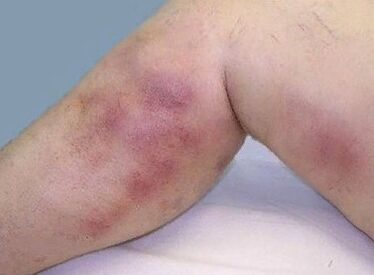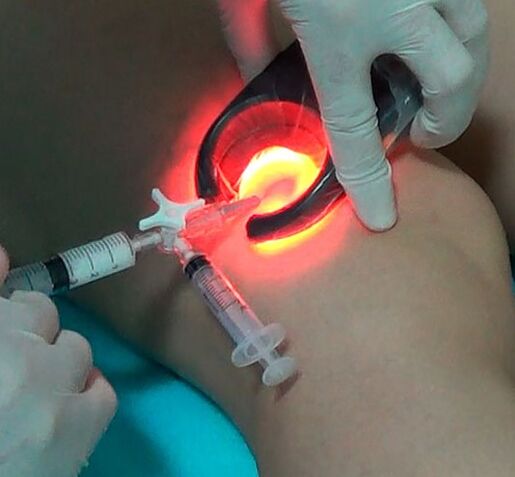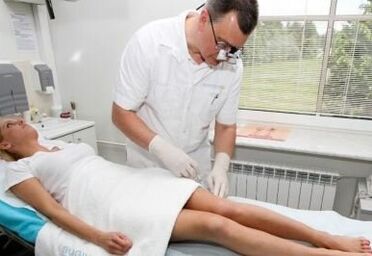Varicose veins are a very common disease, especially among women in whom the work of the lower limbs is impaired. This is due to the fact that the venous valves suffer - these are a type of prison that regulates the back flow of the blood from the legs. Typically, the valves should be closed and open depending on the flow of blood.
With varicose veins, they are almost not closed, which causes stagnation of blood in the veins of the lower limbs. Naturally, a large amount of blood accumulated in the veins leads to stretching their walls, reducing elasticity and sometimes even damage. Accordingly, characteristic manifestations occur on the skin. At first, these are just vascular networks, stars, then tubercles of blue and purple yarn appear, legs swell, the skin begins to peel off, constant pain in the lower limbs are worried. It is therefore very important to recognize the disease at the initial stage and to start treatment on time.
The causes of the development of the disease
Varicose can develop under the influence of many outside factors. Of course, it all depends on a person's lifestyle. However, there are a number of predisposing risk factors that increase the likelihood of varicose veins. Such factors are hereditary predisposition, impaired hormonal balance, nervous system disease, inactive lifestyle, physical overload, flat feet, wearing shoes with a high collection.

Hereditary predisposition - unfortunately, visited close relatives suffering from this disease, that is, the likelihood of it being transmitted to you, so this is often due to the hereditary weakness of the connective tissue or a defect in the valves of the veins. In this case, it is necessary to remember the prevention of varicose veins.
Hormonal imbalance -Constant fluctuations in the level of hormones are most in women and therefore, according to statistics, they are more susceptible to varicose veins. Such fluctuations are observed throughout the menstrual cycle, during pregnancy and during menopause. The use of hormonal drugs (such as contraceptives) also affects. Female hormones significantly affect the elasticity of the walls of blood vessels.
Nervous system diseases, frequent stresses, depressive states - it is known that it is the nervous system that regulates the venous tone. Therefore, all pathologies associated with it can affect the condition of the veins.
Inflammatory processes in the pelvis - they often bother the female. Because of them, the level of hormones can be significantly impaired.
A sedentary lifestyle of prolonged sitting on the computer, for example, the veins of the legs are pulled out, blood flow is disturbed by them. Due to the stagnation of the blood, the vascular walls extend and thin. To date, "computer varicose veins" are even distinguished, so it is often found.
Physical overload - excessive physical activity also does nothing good on vessels. Heavy lifting, constant walking increases the load of the legs and respectively of the veins.
Flat legs - in one way or another, it is deformation of the foot, and also has a certain effect on the vessels of the lower limbs.
The constitution is fat people and especially with high growth are very predisposed to varicose veins in the future.
Wearing high heels is again dangerous for women, as when walking high and not very comfortable heels, the load on the lower limbs increases a great deal.
Clinical manifestations of varicose veins
The symptoms of the disease appear gradually, but they progress constantly, especially in the absence of proper treatment. It all begins with the advent of small vascular networks and stars of the legs, the so -called tulangiectasia. They do not cause much discomfort, but with these manifestations it is necessary to consult a doctor.
In the future, swelling on the legs that appear after a long walk and most often in the evening they start to worry. By the morning they pass on their own. This is the first signal that the function of deep veins that return blood to the heart is impaired.
Over time, patients begin to complain of convulsions in the legs, numbness, more special at night and morning. If the treatment has not started at these stages, then the skin will appear venous nodes, the veins will be visible, bluish or even closer to the red color, they will be painful when palpated. The skin of the lower limbs will begin to gradually change. It will become thick to the touch, dry, will start to peel off and darkened. When walking, the heavy muscles will be disturbed.
And in the places of the appearance of venous nodes will feel severe itching. Inadvertent contractions of the calf muscles at night may also occur.
Diagnosis and complications of varicose veins
The diagnosis of the disease is necessary as early as possible. But it all depends on the patient to go to the hospital.
In diagnosis, they are based on complaints, external manifestations of the legs, the lifestyle of the patient, his poor habits, physics, the presence of varicose veins in parents, brothers, sisters.
In order to confirm the diagnosis, additional instrumental examination methods are prescribed.
Such methods are:
- Ultrasound examination of the veins (ultrasound) - also known as Doppler of the veins of the lower limbs. It allows you to evaluate the structure of the veins, their capacity for a cross country, the velocity and direction of the blood flow, the presence of thrombotic formations, the enlargement of the blood vessels, the presence of any tumors.
- Venography or phlebography contrast - it is performed by introducing contrast matter into the vessels. Its distribution shows the patency of the veins, the condition of the walls, the presence of volume formations in vascular gaps.
Ultrasound is considered more preferable as it is a non -invasive method of examination.
In the absence of adequate treatment, varicose veins are washed to turn a number of complications.
These include:
- thrombophlebitis - inflammation of the enlarged and deformed veins;
- bleeding due to rupture of thin vascular walls;
- The change in the rheological properties of the blood, which leads to the formation of blood clots, this in turn can lead to pulmonary artery thromboembolism, myocardial infarction and stroke;
- Excessive skin pigmentation.
Trophile ulcers can occur from the smallest wound or damage to the skin due to constantly impaired blood flow. As a result, ulcers do not cure for a very long time, they hurt terribly and smell unpleasant.

Basic methods for treating varicose veins
Unfortunately, varicose veins are a chronic disease and there are no methods that can cure it completely. However, medicine detects funds to prevent the disease from progressing.
Treatment directly depends on the stage of varicose veins. If these are just initial manifestations, then you can do without surgery, that is, only conservative methods.
Medicines -This includes medicines that increase the tone of veins (venotonic), anti -bonded drugs to prevent blood clots, non -steroidal anti -inflammatory drugs (painkillers), angioprotectors, as well as all types of creams, ointments and gels for the skin.
Compression methods - they ensure the use of compression socks that require elastic bandages to maintain tone.
Pneum massage is a special massage that is performed with the help of a pneumatic massage. This is very effective as it improves blood circulation, tissue nutrition and enhances the tone of blood vessels.
Sclerotherapy is now an extreme method. It is performed without operation of manipulation. For sclerosis, a special substance is injected into it, which stops blood flow into the vessel, resulting in atrophy over time, it does not function and disappear. However, several sclerotherapy sessions may be required to achieve the desired effect.
Iravascular laser coagulation is already an invasive method of treatment. At the same time, with the help of a laser, surgeons coagulate damaged veins under local anesthesia.
Pieces are a slightly outdated method, but still effective. It belongs to folk medicine. When applying leeches, bite the skin and, when sucking, is released into the blood substance called hirudin. Dilutes the blood and does not allow blood clots.
Diet - in the diet of patients suffering from varicose veins, there should be a large number of vegetables and fruits in any form, seafood, legumes, nuts, varieties with low fat fat and dairy products.
Among the unconventional treatment methods are compressed with apple cider vinegar, soap and potatoes, baking soda and the use of ginseng tincture.
The basics of varicose prevention

Many people wonder if it is finally possible to cure varicose veins? The answer is not. However, some preventative measures can be observed to prevent the disease from occurring.
In particular, it is an active lifestyle, to get rid of extra pounds, permanent gymnastics for the lower limbs, the use of compression linen.
If the disease has already occurred, then the use of hormonal contraceptives should be avoided (they contain female hormones that can worsen the course of the disease).
In addition, it should be avoided:
- The use of any shoes in heels as this increases the load of the legs.
- Increasing body weight and even more, obesity.
- The presence in the fat diet, sharp, fried, smoked and salty.
- Heavy lift.
- He lies in a hot bath for a long time.
- Visit to the bathtub and sauna.
- Alcohol abuse, smoking.
- Self -confidence without consulting a doctor.
In addition, those who should be in a sitting or upright position for a long time should take into account this:
- During a long stay on your feet, it will not hurt to climb the socks and descend into your heels, move to the foot and vigorously move your toes to scatter the accumulated blood;
- With prolonged work in the office in front of your computer, you can periodically place your feet on the table so that the blood flows better than your feet;
- You can buy a special knife stand that will be very convenient to do gymnastics;
- It is very useful to raise and lower your fingers periodically, this tones the calf muscles and activates blood flow to the veins.
Be sure to get up every hour, walk for a few minutes and take a small fee.

















